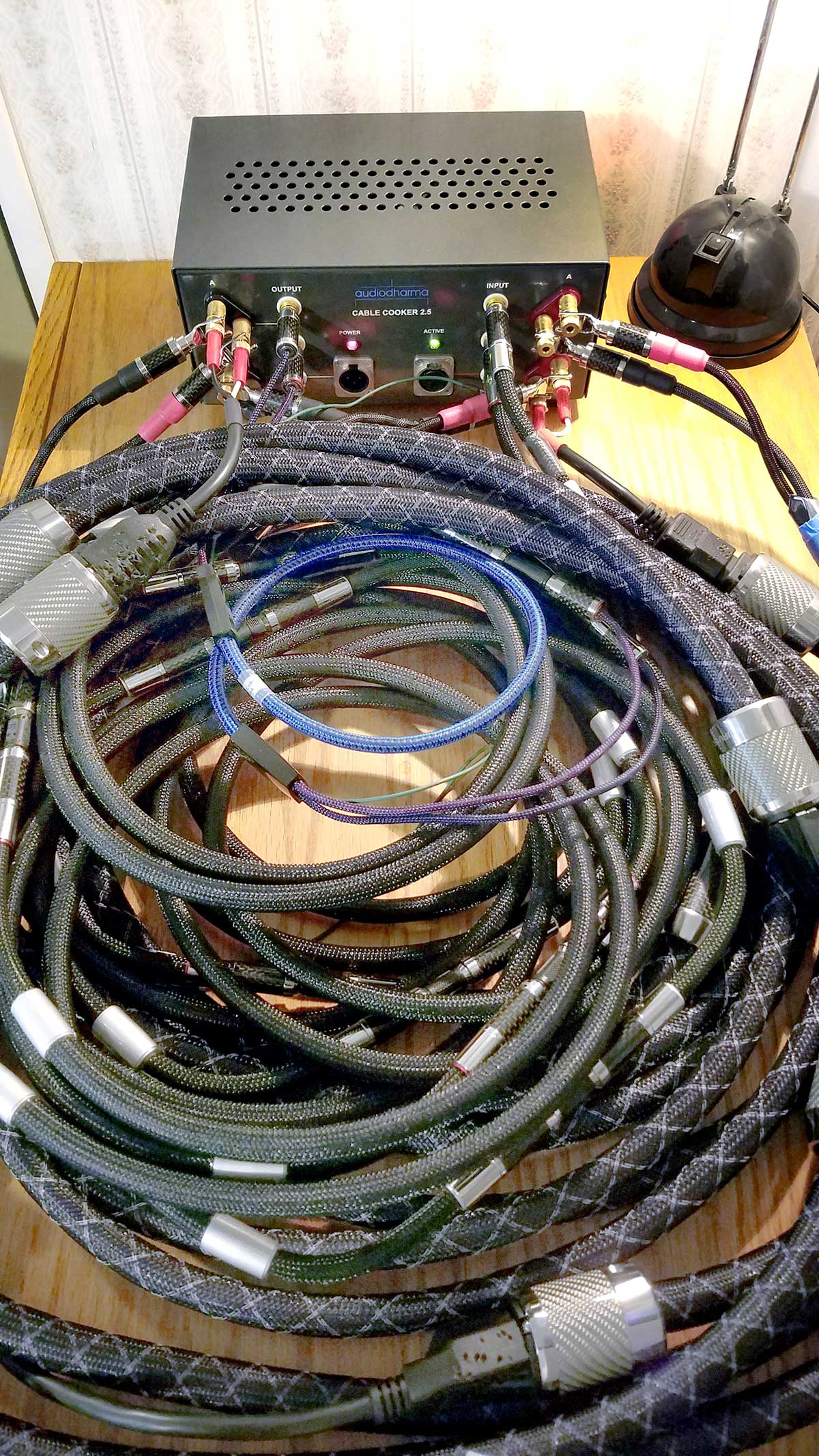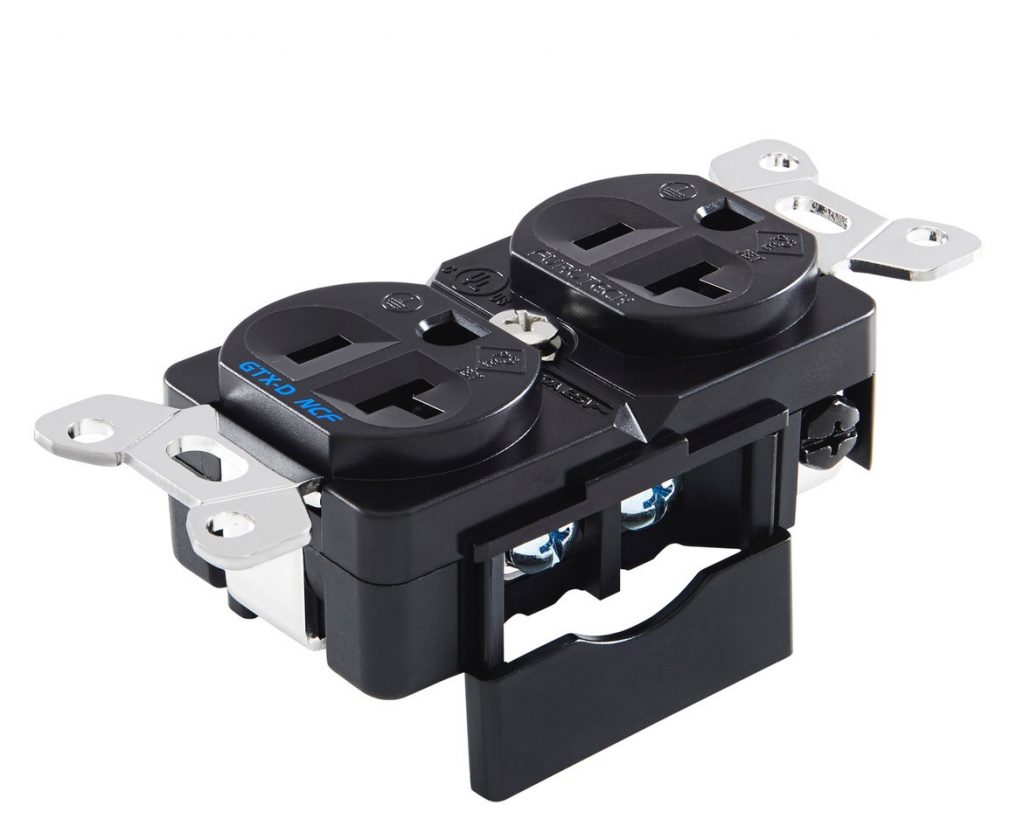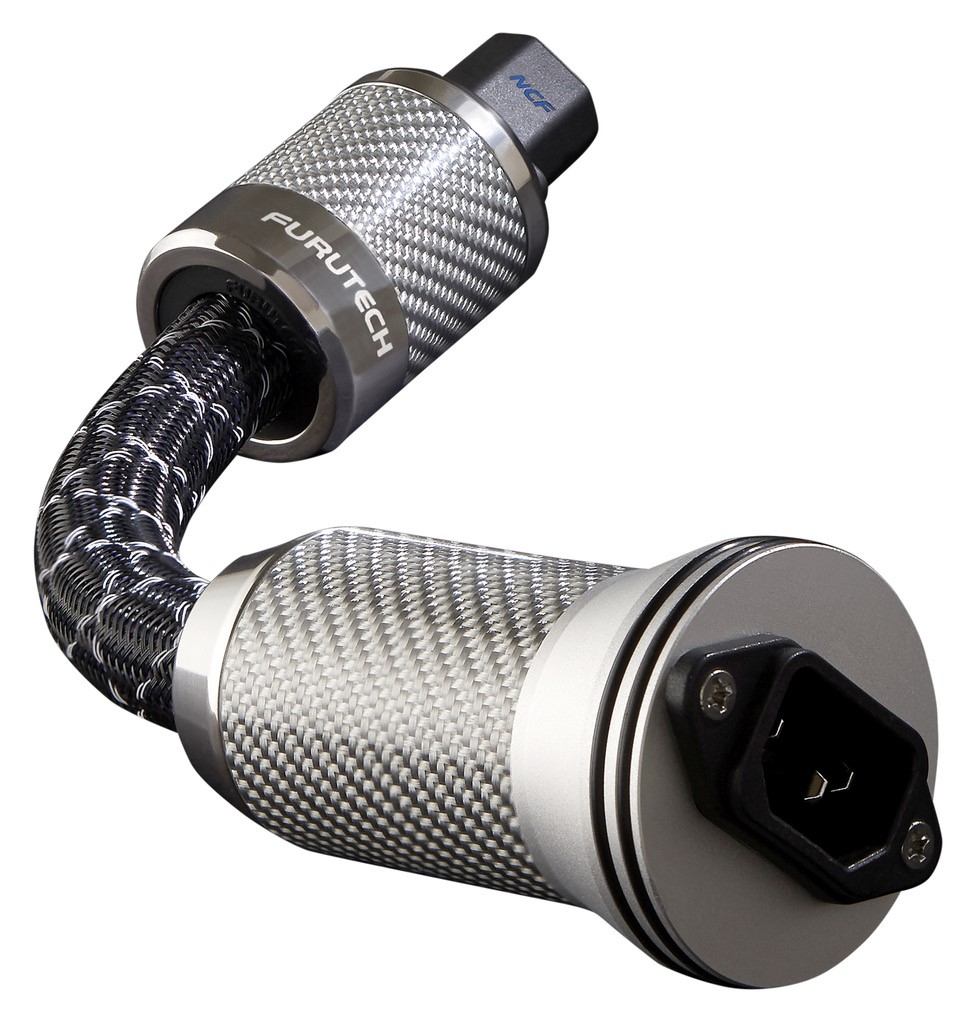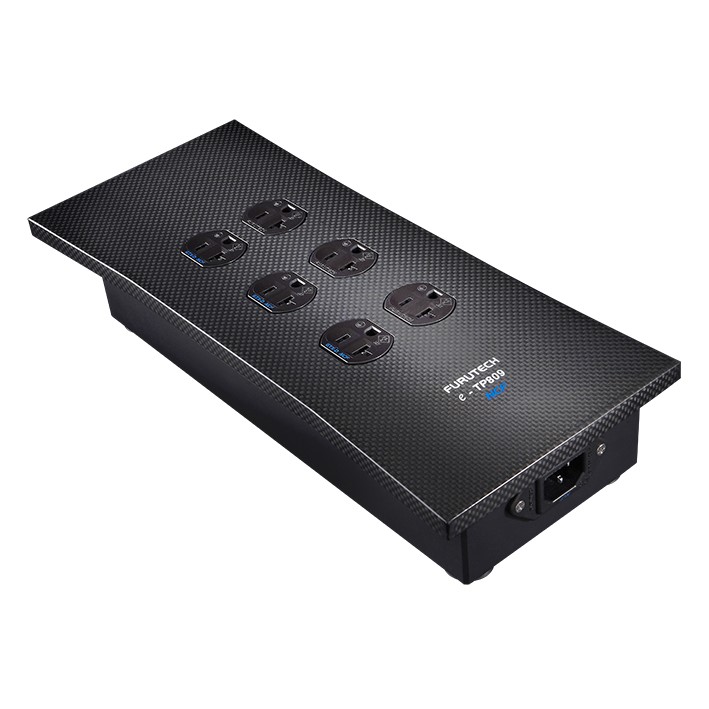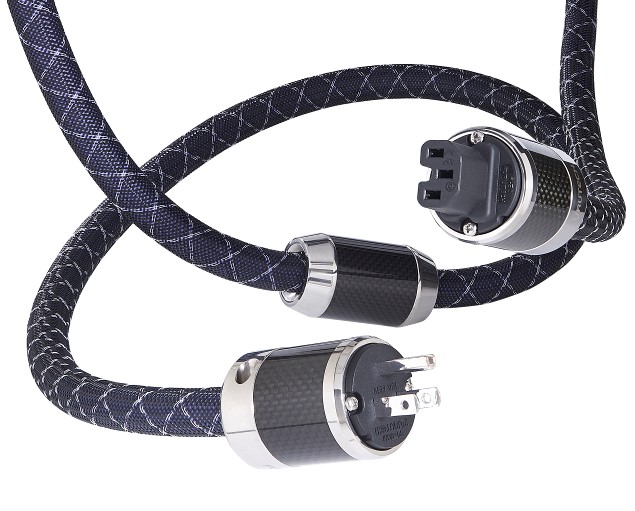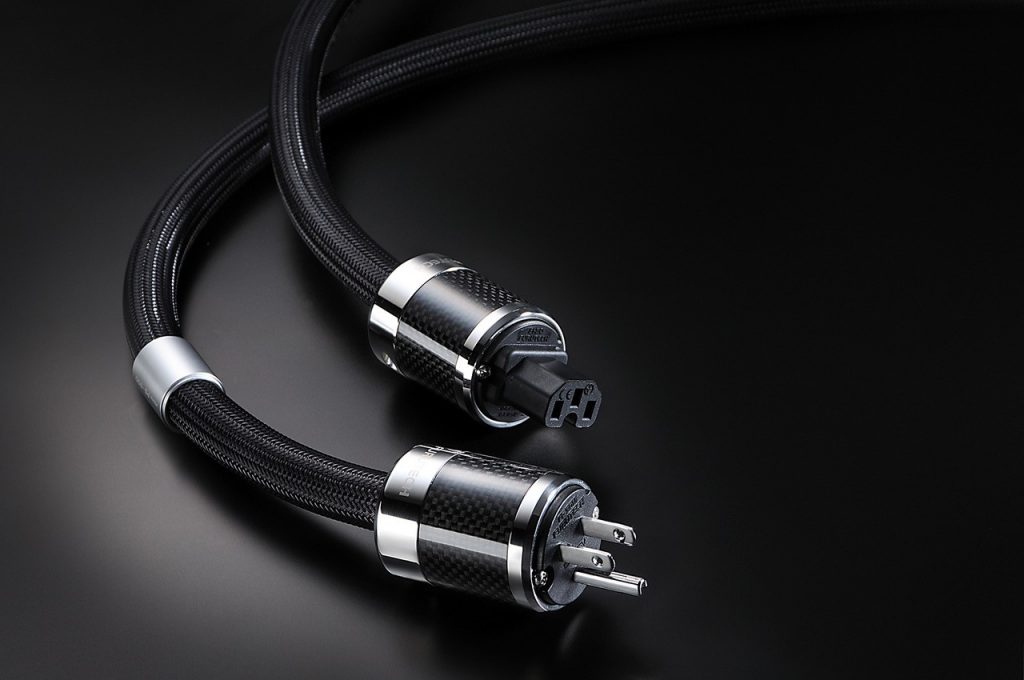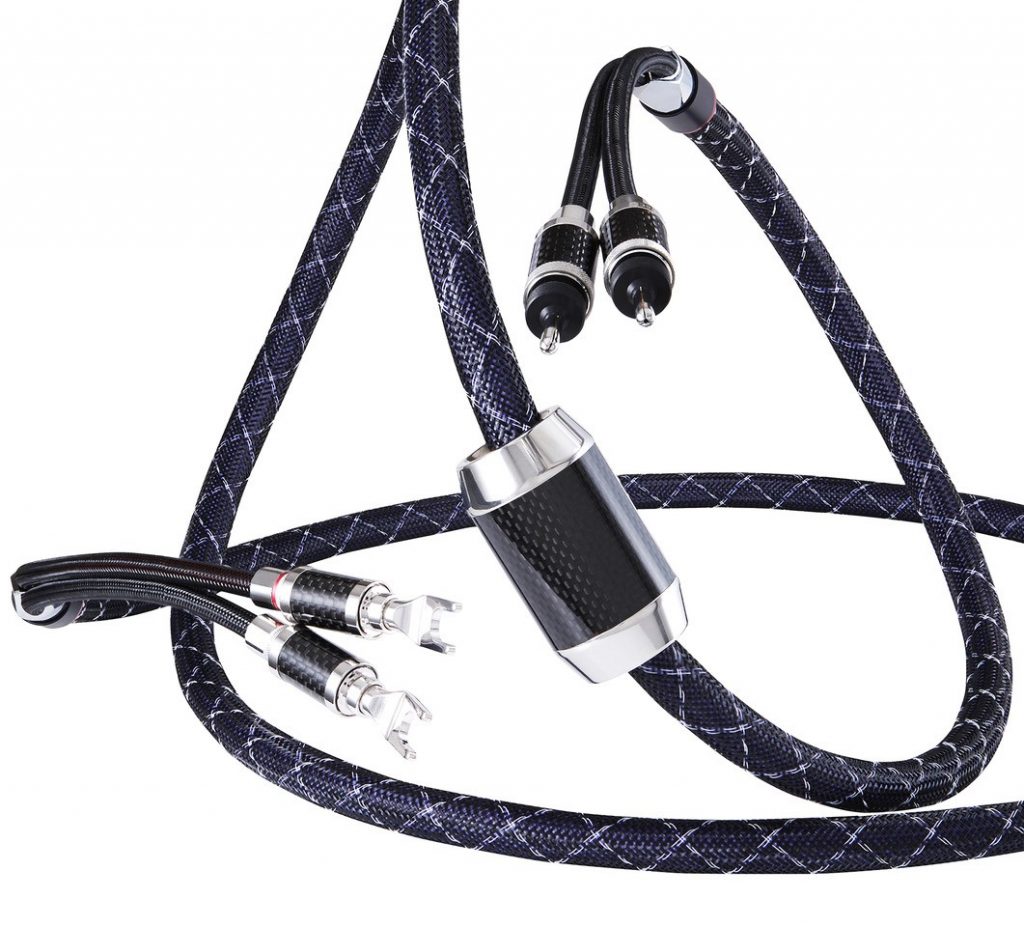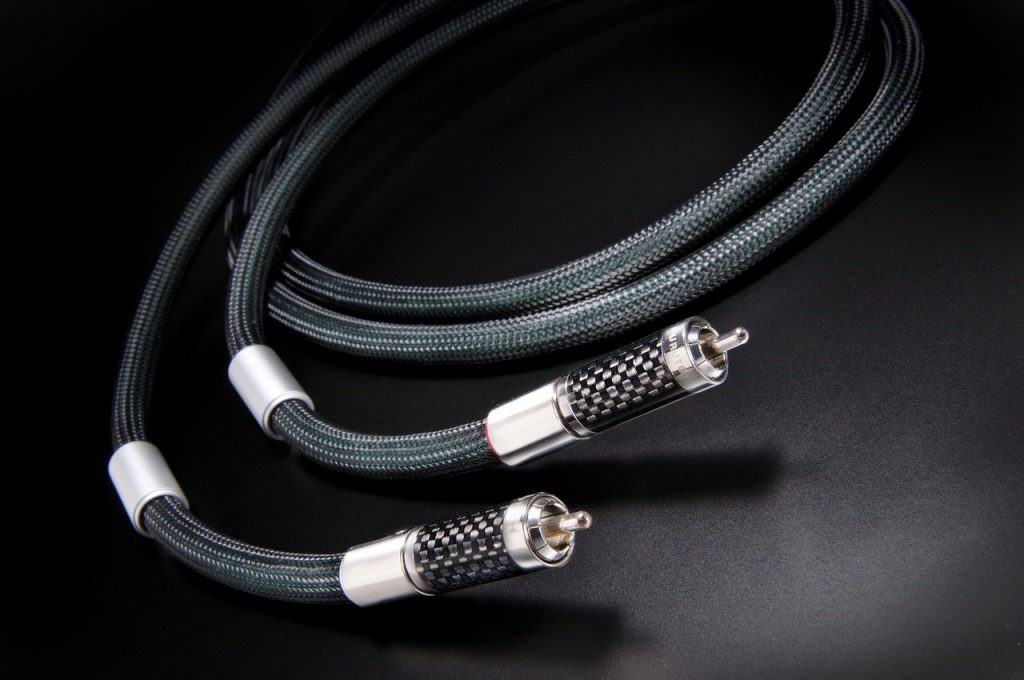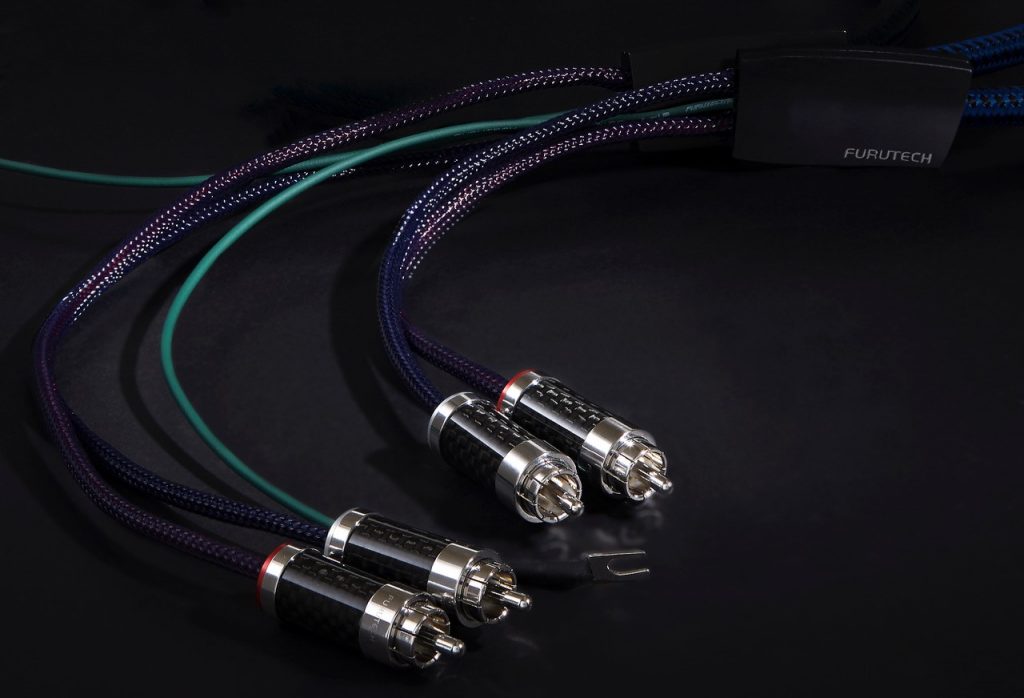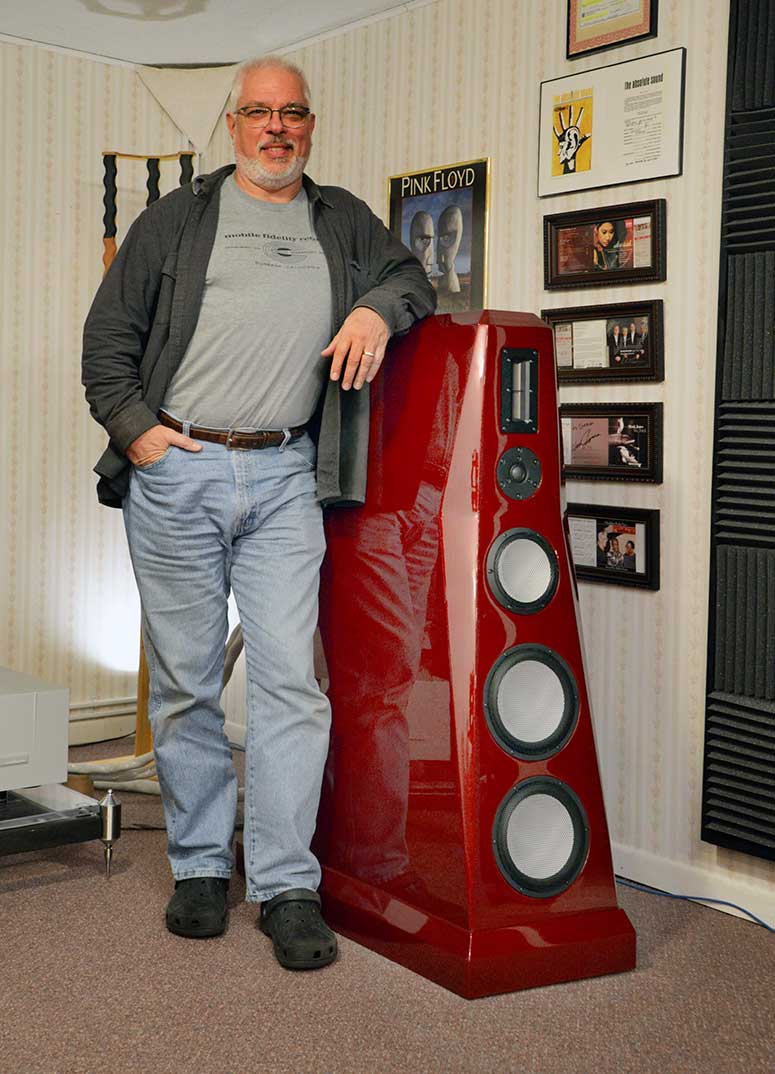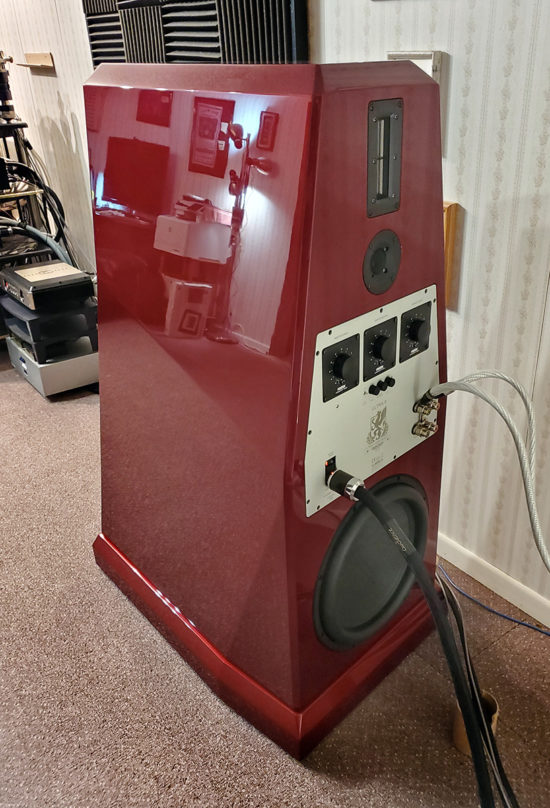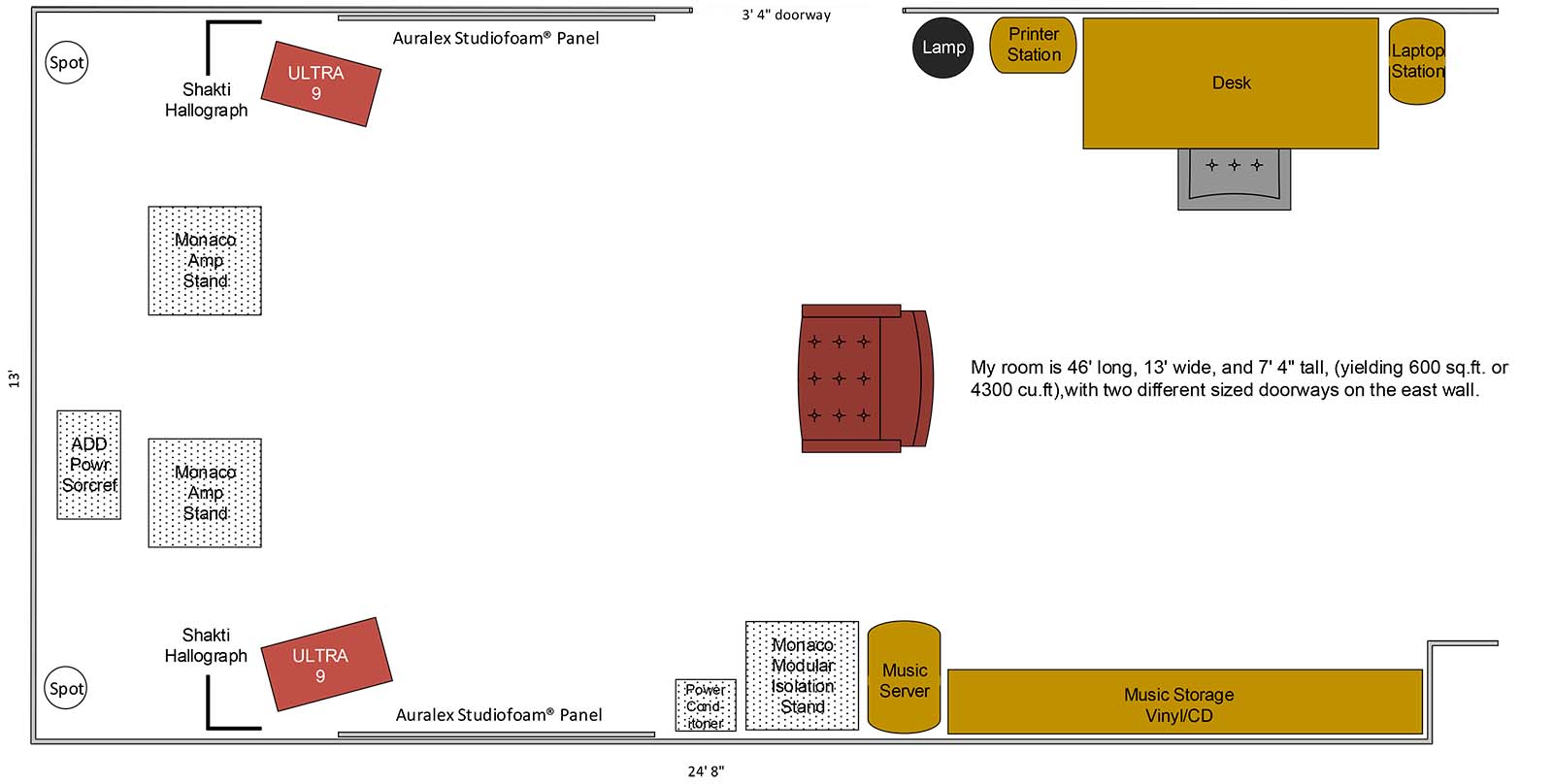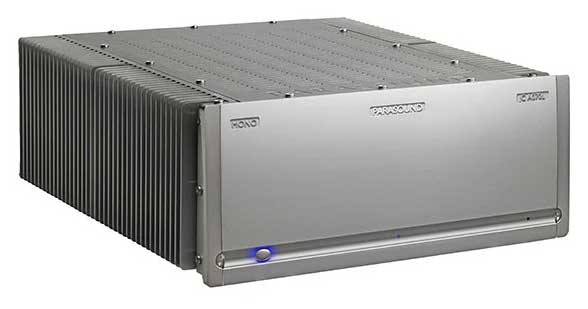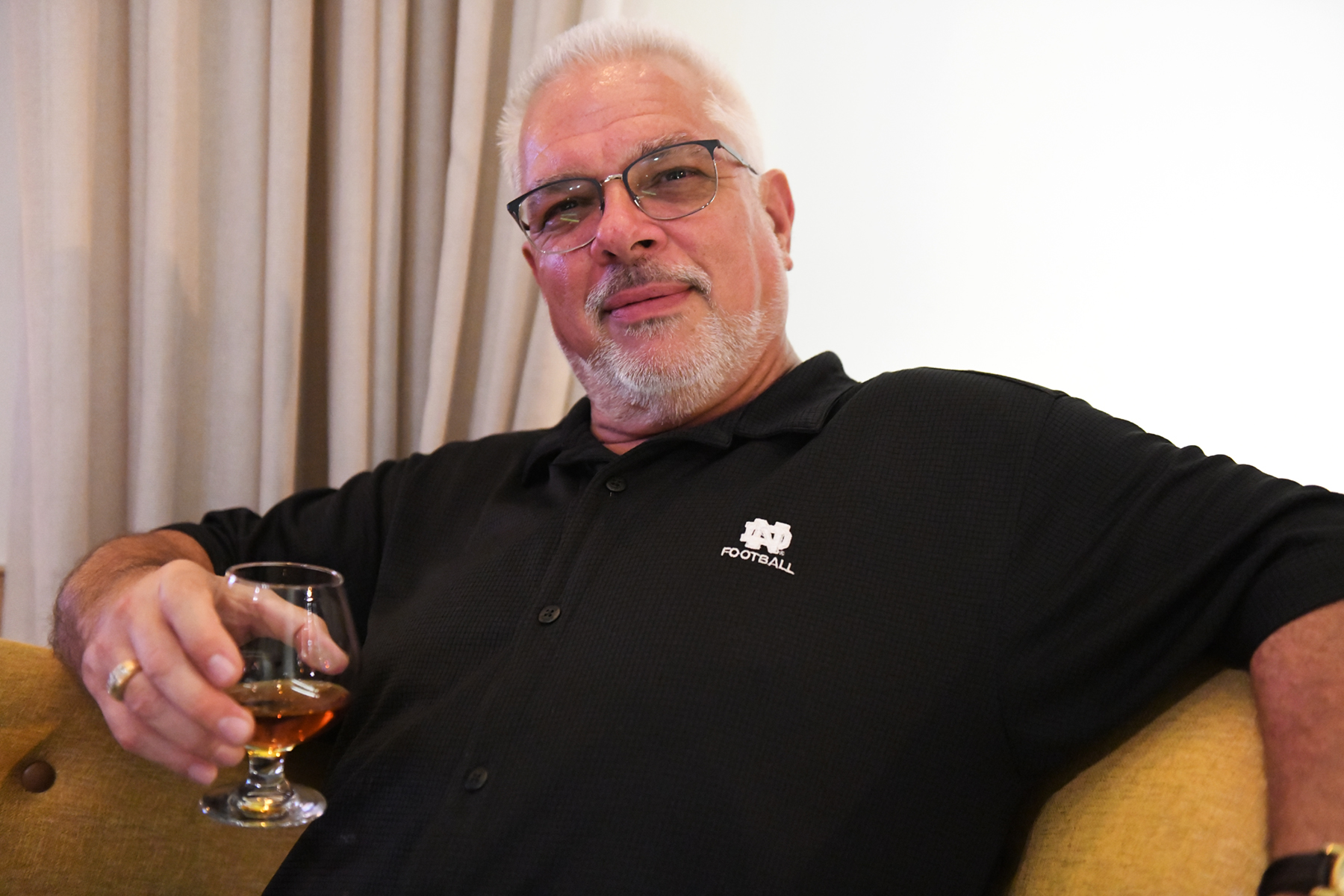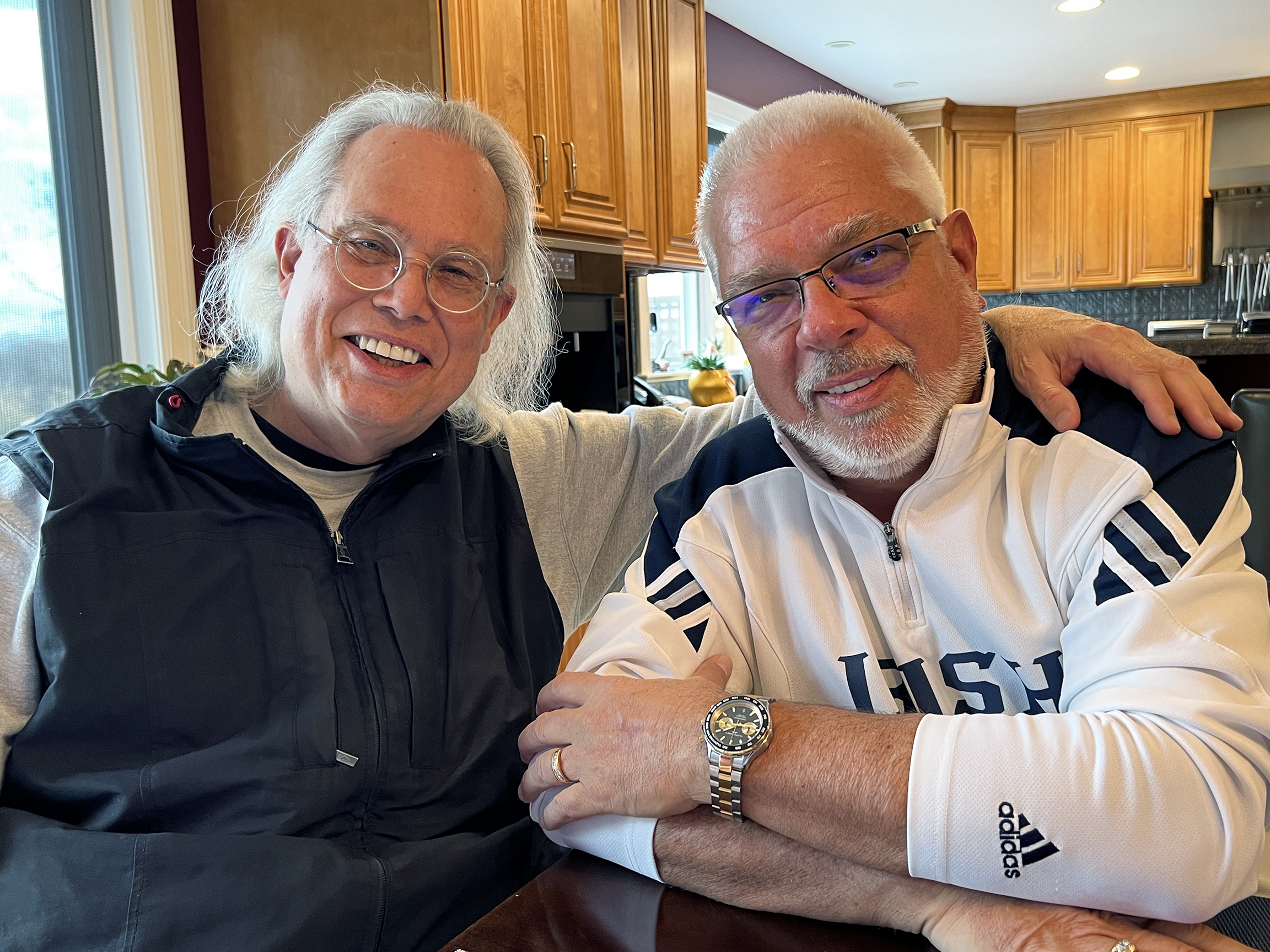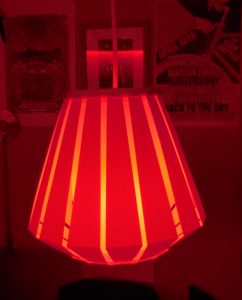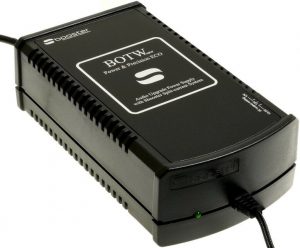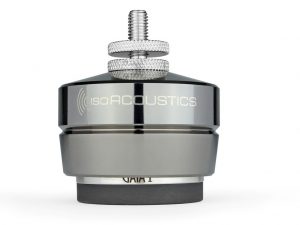When I first spoke with Scot Markwell, US Distributor of Furutech products, at Elite Audio Video Distribution in LA, and a longtime colleague of, and setup man for, the late Harry Pearson, about the opportunity to review a full loom of Furutech flagship cables and passive power devices, I admit to being more than a little interested.
I can't imagine anyone motivated to read this evaluation who could be unfamiliar with the name. The widespread acceptance and use of the Furutech brand of terminations by so many of the most recognized cable and speaker manufactures has made the name almost ubiquitous in today's high-end cable game.
As well as fabricating a large selection of cable and speaker terminations for the industry at large along with their own branded cable products, their product lineup also includes several very effective passive power management and purifying devices. In fact, I've owned and used an earlier version of the new six-outlet e-TP809 NCF AC Power Distributor included in this review, the Furutech eTP-80, for over a decade now. I've also relied on the notable contributions of the Furutech RD-2 Disc Demagnetizer (long since replaced with the current Destat III) for over 15—I use it on every optical disc I play, or rip, along with some other processes, including the Furutech PC-α fluid.
Two large shipping boxes arrived on my doorstep, containing what can only be considered the full Monte of Furutech products. Starting with AC delivery, right from the wall, I replaced my long-time reference PS Audio Power Port Classic AC receptacle on my dedicate 20-amp entrance with the GTX DR NCF Duplex Receptacle ($280). From that upgraded socket, a 1.8M NanoFlux NCF Power Cable ($5800) with 10 Gauge PCOCC Single-Crystal Copper conductors with Nano AUAg Technology, using the FI-50MR NCF & FI-50R NCF terminations, connected to the Flux-50 NCF Filter ($1250). The Flux5-NCF Filter was connected to the new six-outlet e-TP809 NCF AC Power Distributor ($3995), housing three more of the GTX DR NCF duplex outlets. Two more identical 1.8M NanoFlux NCF Power Cables ($5800/ea.), conducted AC from two GTX DR NCF sockets of the e-TP809 to each of my mono amplifiers.
My AudioDharma Cable Cooker, fully loaded running in signal, power, and speaker cables all at once!
A 3.0M pair of NanoFlux Speaker cables ($8000/pr.), 9 Gauge PCOCC Single-Crystal Copper Conductors with α (Alpha) Nano-Au-Ag OCC Conductor, terminated with CF-201 R spades, ran from each amp its respective speaker. As Furutech does not make a single set bi-wire at this time, they included four of the 0.3M FP-3TS20 PCOCC jumpers, ($1100 for the 4-piece set), made of 14-Gauge Power Cable terminated with CF-202 Banana Plugs on all ends.
To power my linestage, phonostage, and DAC, I used three 1.8M NanoFlux Power Cables, 10 Gauge PCOCC Single-Crystal Copper conductors with α (Alpha) Nano-Au-Ag OCC Conductor, also using the FI-50MR & FI-50R connectors. Finally, to power my Von Schweikert Audio VR-55 Aktive amplifiers, a pair of 3.0M Powerflux Power Cords ($3200/ea.) rounded out the power delivery system.
Component connections were handled with five of the 1.2M single-ended Lineflux cables ($2840/ea.), one each for my phonostage, DAC, Optical Disc Player, and a pair of mono amps, all with locking RCA collars. A single 1.1M single-ended AG-16 R4 ($1180), Silver-plated α (Alpha) OCC Phono Cable connected my 'table's output to my phonostage.
Furutech GTX-DR NCF Duplex Receptacle
It should be noted that this full Furutech system replaced my existing reference power management and cable stable, consisting of the extraordinary Audience aR-12 TSSOX passive power conditioner and Audience Au24-SE HP and LP powerChords, and a full Stealth Audio signal cable lineup, including the Helios phono cable, Śakra v12 single ended interconnects, and Dream v14 speaker cables. The ONLY connection in my system what was not replaced with a Furutech cable was the USB cable from my music server to my DAC, where my reference Audience Au24-SE+ USB cable stayed in play. All told, the total value of the Furutech AC Distribution products and cables used was just over $70,000, or a little less than two-thirds the cost of my reference wiring.
The equipment used in this evaluation included my Kronos Sparta turntable with Helena tonearm, fitted with the Air Tight PC-1 MC cartridge, feeding the Dynamic Sounds Associates Phono II phono stage. Digital was rendered by either my own Windows 10 based PC Music Server, using JRiver 24 (64-bit) or Roon 1.5, with Fidelizer v8.2, or my extensively modified McCormack UDP-1 optical disc player, with both handing off to my Hegel HD30 DAC. The linestage was the Audionet PRE G2 or the Constellation Inspiration 1.0, power amps were the Audionet MAX monos or a pair of the Constellation Inspiration 1.0 stereo amps in a vertical biamp configuration, and speakers were either the GamuT Zodiac or the Von Schweikert VR-55 Aktive. All electronics rested on a Grand Prix Audio Monaco Modular equipment stand, with the amps on GPA's matching amp stands.
The Furutech "Tech"
It should come as no real surprise that the path to building great signal transfer conduits, like high-performance audio cables, would not be that dissimilar to one taken in formula racing. With cables, you deal with the unique and effective implementation of four cardinal elements; conductive material/s, construction geometry, dielectric, and terminations. This is an exceptionally well designed, executed, and performing system of signal delivery products, and speaks to the attention to detail and synergistic efforts that have gone into their creation over time. Let's look under the sheathing to see how Furutech undertakes the challenge to accomplish their best and get a sense of what all those flashy acronyms and abbreviations describe.
Furutech Flux-50 NCF Filter
Their Nano Crystal² Formula, or NCF for short, is the culmination of thirty years of steady and consistent research at Furutech. It is described as a special crystalline material having two "active" properties. The first is said to generate negative ions that are claimed to eliminate static. The second is said to convert thermal energy to the far-infrared spectrum of electromagnetic radiation. Infrared is the part of the electromagnetic spectrum just above visible light, and far-infrared is at the top of that section of the spectrum. Furutech then combines this remarkable crystalline material with nano-sized ceramic particles and carbon powder to harness their additional "Piezo Effect" damping properties. These connectors are said to effectively eliminate static, afford interconversion of thermal, mechanical, and electrical energy, and dampen vibrations.
Next up, ALL metallic parts used in Furutech products go through the α (Alpha) Process treatment. The α (Alpha) process is a two-stage treatment, beginning with a deep, conditioning cryogenic freeze of all metal parts. It is known that exposure to temperatures from between -196 to -250C (-385 to -418F) transforms the molecular structure of the treated parts in such a way that their molecules bond together more tightly, causing the overall structure to become more stable, relieving internal stress, improving electrical conductivity, and yielding both improved power and signal transfer. The second step exposes these same parts to a Ring Demagnetization treatment, a process patented by is Sekiguchi Machine Sale Co., Ltd. in Japan, and licensed by Furutech, further enhancing the conductivity of all treated materials. Furutech claims that all metallic parts that have undergone this treatment are considerably more stress-free, stable, and highly conductive.
Lastly, they employ a Nano Liquid (the Nano-Au-Ag part of the technology), a dispersing Squalene oil with a suspension of a very precise mix of super-micro particles (just 8 nano-meters - 8/1000000 mm in diameter), of both gold (chemical symbol Au) and silver (chemical symbol Ag). Aside from preventing conductor oxidation, when applied to the surface of the wire, these micro-fine particles readily fill or integrate any concave or convex sections on the conductor surface, effectively increasing conduction area, and thereby lowering impedance.
Furutech e-TP809 NCF power distributor
Further, all Furutech cables are directional. Power cables are easily differentiated, of course. With the speaker cables, the Noise Canceling module is closer the source (amplifier) end, and in the case of the RCA cables, each has a silver band with a white directional arrow near the input end. The AG-16 phono cable is purpose-made for phono use, and it has a small name band at the source end. Finally, the jumpers are marked with a small blue band on each piece to designate the source end.
The GTX DR NFC duplex receptacle is an updated version of the original GTX DR, retaining the basic body style, pure copper conduction parts, and features. The NFC version is manufactured from their new NCF material, includes Rhodium-plated (α Alpha-treated) pure copper conductors (0.8mm), a nonmagnetic stainless conductor spring system, including a specially designed patent-pending conductor pressure plate, with a body of Nylon/fiberglass, piezo ceramic, and carbon damping material. The cover is polycarbonate, with a nonmagnetic 2.0mm-thick, stainless brace plate.
The NanoFlux series of AC cables use all α (Alpha) Nano-Au-Ag OCC conductors, double sheath construction, and their special high-grade flexible PVC to improve mechanical damping. This series of AC cables is surrounded by a Carbon Fiber finished Formula GC-303 EMI-Absorbent Module and terminated with Furutech's nonmagnetic rhodium-plated Carbon Fiber finished FI-50 (R)/ FI-50M(R) connectors.
Furutech NanoFlux NCF Power Cable
The NanoFlux NCF series of AC cables replace the premium Furutech terminations with the new NCF Piezo Ceramic Series connector bodies and housings and employ their Neo-damper damping material in place of the Formula GC-303 EMI-Absorbent Module.
The Flux-50 NCF filter uses an AC-1501R EMI Noise Filter, 24K gold-plated α (Alpha) non-magnetic connectors and conductors to protect against radiated noise, RoHS (Restriction of Hazardous Substances) compliant flexible PVC sheathing for improved isolation from vibration, high-grade PE insulation to help reduce capacitance, and a Patented Floating Field Damper (US Patent No.: 6,669,491) to create an effective earth/ground jumper system, combined with all the advantages gained from their NCF and α (Alpha) processes. It was designed to eliminate radiated AC noise from high-quality audio and video systems without impacting any of the highest frequencies, as typically, attributes like air, dynamic contrasts, and other spatial qualities are reinforced by frequencies normally thought to be outside of the normal range of human hearing, as high as 100 kHz, 500 kHz, and even beyond.
The e-TP809 NCF AC Power Distributor is a sophisticated passive device. Three of the GTX NCF duplex outlets are housed atop a roughly 13" by 5 ¼" by 2 ¾" chassis fabricated of the highest-grade aluminum used to effectively shield against RFI (Radio Frequency Interference), with carbon fiber finishing. Furutech employs a layer of something called GC-303 (described only as a special material) bonded to the interior bottom plate of the chassis to further absorb EMI (Electromagnetic Interference) generated by the internal fittings of the unit. It further uses their NCF technology throughout, is wired with α (Alpha) treated CB10 10 AWG conductors, and all conductors are star-grounded and sheathed within resonance-absorbing tubing. Finally, the whole chassis is assembled using their patented Axial Locking Screws, hand torqued at the factory. This process alone is said to measurably reduce receptacle resonance by a factor of ten!
Furutech NanoFlux Power Cable
The Furutech speaker cables I auditioned use α (Alpha) Nano-Au-Ag OCC Pure Transmission conductors, terminated with rhodium-plated, nonmagnetic, pure copper spade connectors, but are available with rhodium-plated banana connectors as well. The terminations are finished with non-resonant connector bodies, in layered carbon fiber and stainless steel at each end of the cable, and employ a high grade of polyethylene dielectric/insulation to reduce capacitance and improve mechanical damping.
The Lineflux interconnects feature solid-core α (Alpha) OCC conductors, double-layer shielding, and a high-grade polyethylene dielectric with insulating materials that further dampen the transmission line. The substantially-built extremely non-resonant RCA (or available XLR) connectors are finished in layered carbon fiber and stainless steel with rhodium-plated pins.
Their flagship Ag-16 Phono Cable features special-grade nitrogen injected skin-foam-skin polyethylene dielectric to provide insulation for the silver-plated α (Alpha) OCC Conductors, in three-layered shielding, using what they call four-way grounding with an external ground wire. Available terminations are rhodium-plated Carbon and Stainless finished CF-DIN connector or L-DIN connector, α (Alpha) OCC RCA connectors (on my review samples), or CF-601M XLR connectors.
Furutech Powerflux Power Cord
The AC and speaker cables include a "noise canceling" module surrounding the cable at a point closer to the source end. They are uniformly shaped cylindrical modules, about an inch and three-quarters in diameter and nearly three inches long. When I asked for a little more info on what these modules were, and what they did, the response was very direct and simple, "The pods contain a crystalline material, GC-303, a granulated noise-reduction material that removes RFI/EMI, the same as that found in our power distributors, simple as that…" You may dig a little deeper into all the Furutech technology and processes at this page on their web site.
At this point, hope that you I have been able to give you some sense of just how much technology, time, effort, and attention to detail are required to develop, test, and then manufacture and deliver products of this level of complexity and effectiveness. Such exceptional, time-consuming efforts, correspondingly high tolerances, and use of premium materials unavoidable result in selling prices that cannot be considered inexpensive. Yet, even with such justification, it seems there is still a faction within our industry that is willing to disregard, ignore, or even scoff at the impact well-designed and meticulously executed cable looms contribute to a carefully assembled, high-performance audio system. Once you hear a system transformed from good to exceptional by simply swapping the cables, you may not choose to run out and spend a fortune on cabling yourself, but you will understand that cables are every bit as much a component in your system as are a phono or line stage, or a source.
The entire loom spent an appropriate period conditioning on my audiodharma Cable Cooker© before being dropped into play, with the only exceptions being the GTX DR NCF Duplex Receptacle and the e-TP809 NCF AC Power Distributor, which had to be burned-in in place.
Furutech Nanoflux Speaker cables
Looming Sonics
The entire loom swap was accomplished in just about an hour and forty minutes. Upon firing up the system immediately after that change, I was quite pleasantly surprised. While there was an apparent diminishment of the previously near utterly black background and the inviting organicness my reference aR-12 TSSOX routinely delivers, it was nonetheless remarkably well managed with the Flux-50 NCF Filter, the e-TP809 NCF AC Power Distributor, and the NanoFlux and NanoFlux NCF Power Cables in place.
In an effort to verify just how effective these passive Furutech devices were, I bypassed them for several hours of listening, removing the Flux-50 NCF Filter and eTP809NCF from the chain, plugging the amplifier's power cables directly into the two receptacles from my dedicated 20-amp entrance. While the system still sounded very good overall (remember that all the AC cords and the Speaker Cables include their own noise management module), the level of quietness, smoothness (NOT compression), texture, authenticity of tone color, and, surprisingly, the pace, rhythm, and timing to the flow of the music that returned when plugging them back into the Flux-50 and e-TP809 was more than just a little amazing. These two passive devices were completely startling in their degree of effectiveness, affording what I would estimate as something on the order of roughly two-thirds, to three-quarters of the quieting and genuineness delivered by my near $13,000 reference conditioner. Yeah, this was going to be interesting.
Bass with the Furutech loom in place was exceptional, with noteworthy extension and even more remarkable rendering of detail, resolution, and definition. Their ability to present extended low frequency performance, with realistic and perceptible weight and no obvious smearing or bloating, afforded an incredible degree of individuality and articulation to information in the lowest registers, yielding a wonderful portrayal of both pitch definition and timbre. In this regard, these products very closely approach that of the very best I have heard!
Furutech single-ended Lineflux interconnects
Mids were articulate and vivid yet rendered with excellent color and texture. Overall, voices of all variety were clearly conveyed, with vibrantly rich tone color, remarkably genuine texture, and an exceptionally faithful reproduction the harmonic bloom and body of instruments. Massed strings are clearly discernible in their individual voices, as is subtle fingering work, presented very clearly in its execution. Brass and reed instruments have that clear signature "bite," as well as all their complex underlying overtones and cymbals shimmer with their authentic "creamy" bronzy sound, all pointing to an accurately recreated harmonic envelop.
Treble performance was excellent. Not only is it very well extended, but it is fluently conveyed with a remarkable sense of speed and delicacy, as well as significant shimmer and air. Their ability to present timbral decay up top is exceptional...trails just recede very naturally, decaying in a continuous manner, fading gracefully to silence. Lesser cables tend to truncate trailing harmonics with increasing loss of inner detail, specificity, and focus as they diminish.
Aside from their astonishing bass performance and remarkably faithful purity of timber, these cables greatest strengths may lie in their ability to get out of their own way and reconstruct the proper rhythmic and timing proficiency of sources, as well as their capabilities to regenerate an amazingly authentic sense of body and bloom of the musical envelope they reconstruct.
I was also engaged with this systems ability to render inner-detail. The way that they conveyed shadings and specificity in the microdynamic realm, and their expressiveness down close to the noise floor was exceptional. This is the second area, much like their abilities depicting the lowest frequencies, where they approach the level of performance on par with the very best I have heard.
Furutech single-ended AG-16 R4 phono cable
Likewise, their ability to express dynamic contrasts accurately, and to maintain proper size and scaling across all volume ranges was extremely impressive. This is an area where lesser cables, ones that suffer from time domain or dynamic variations across the audio spectrum, may portray a lead instrument like a violin, guitar, or saxophone in proper size and location. But when there is an abrupt change in scale, like a crescendo from another section of the orchestra or band, or a powerful drum or bass passage, some cable systems tend to constrain and compress that dramatic change, forestalling its dynamic brunt and impact on the overall presentation, while even others blur the harmonic envelope of the lead instruments while trying to convey that scale change. While not flawless in this regard, they were nonetheless exceptional.
Vocals had vibrancy and life, and were full of bloom, from Rickie Lee Jones' wile and charm on Girl At Her Volcano (Warner Brothers, 1-23805) to Janis Ian's irony and anger on Breaking Silence (Analogue Productions, CAPP 027 SA), or from Stevie Ray Vaughn's smoldering angst on Couldn't Stand the Weather (Absolute Analogue, AA 005) to David Bowie's playful and imaginative pensiveness on The Rise And Fall Of Ziggy Stardust And The Spiders From Mars (Mobile Fidelity Sound Lab, MFSL 1-064). I was consistently treated to the subtle cues that revealed and expressed the underlying emotion and purpose of these works.
Overall, I was taken by how expressly this system was able to deliver the message of the music, especially as compared to my reference system. By direct comparison after the re-installation of my reference system, the Furutech system was not shamed or embarrassed given the price difference. In fact, their very competitiveness in terms of bass impact and definition, deliciously vivid tone color and texture, their propulsive rhythmic and dynamic abilities, and their ability to express fine detail and nuance combine to make them overachievers in their price range.
I was so taken with this cable system that I have asked for a long-term loan of both the NanoFlux speaker cables and the AG-16 phono cable, as I believe they represent benchmarks at their price points. They are just that good. You may find a cable system in this price range that offers slightly enhanced performance in one or another category, but given my experience with cables, going back to the beginnings of "high-end" cable products in the late 1970's, I'm unaware of one as well balanced and accomplished overall as these Furutech products afford. If you have the system for them, and the dough to step into this level of performance, they are most enthusiastically recommended.
GTX-DR NCF Duplex Receptacle
Retail: $280
Flux-50 NCF Filter
Retail: $1250
e-TP809 NCF AC Power Distributor
Retail: $3995
AG-16 Phono Cable 1.1M/single-ended
Retail: $1180/pr.
Lineflux High End Interconnect Cable 1.2M/single-ended
Retail: $2840/pr.
NanoFlux Speaker Cable/spades 3.0 M
Retail: $8000/pr.
Speaker Jumpers 0.3M/bananas
Retail: $1100/pr.
NanoFlux NCF Power Cable 1.8M
Retail: $5800
Nanoflux Power Cable 1.8M
Retail: $4395
Powerflux Power Cord 3.0M
Retail: $3200
Powerflux Power Cord 2.0M
Retail: $3100
Elite Audio Video Distribution
PO Box 93896, Los Angeles, CA 90093 USA
Scot Markwell
323.466.9694 x22




